Guadeloupe is an intoxicating mix of Caribbean cool and French chic. The French influence gives it a very different dynamic to that of West Indies islands such as Barbados, Antigua and Jamaica which are more familiar to British travellers.
As an overseas department of France, French is spoken and its currency is the Euro. Visitors entering the country via flights from Paris can do so with no immigration cards.
Yet, it is relatively undiscovered by the British, and armed with a little schoolgirl French I set off to explore.
It is an archipelago of islands, including the outer Les Saintes, Desirade, and Marie Galante reminiscent of the Caribbean of yesteryear – sleepy and charming.
The butterfly-shaped main island is made up of two parts separated by a narrow sea channel called Salt River. The right hand bigger ‘wing’ is called Grande Terre and the left, Basse Terre, with the two parts connected by road. Both have distinct personalities with Basse Terre being the most dramatic with a national Park crowned by the Soufriere Volcano.
I headed to Deshaies on the north coast of Basse Terre, passing sugar cane plantations and old rum distilleries.
French charm
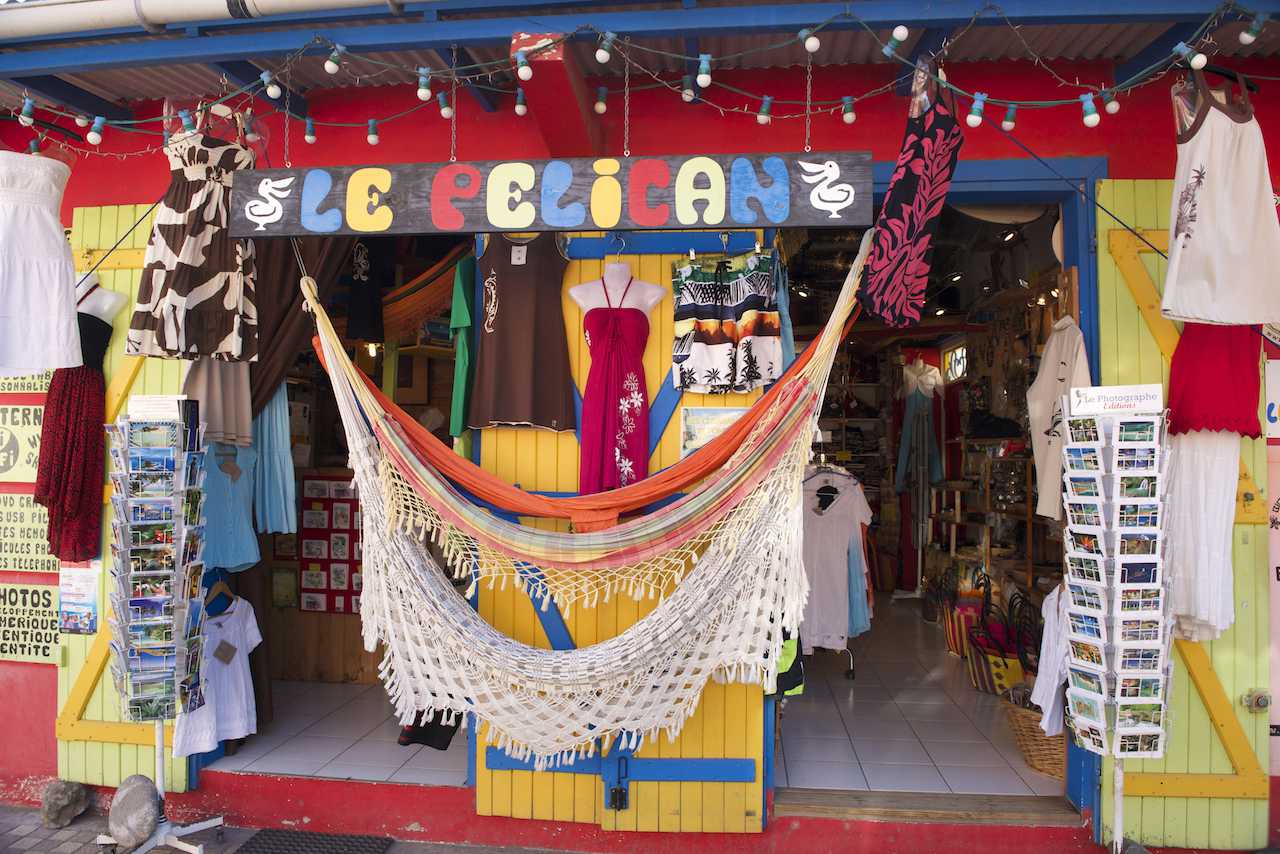
Shop in Deshaies where Death in Paradise is filmed (c) Judith Baker
The tiny seaside town of Deshaies (pronounced Daaaay) might look a little familiar to fans of the BBC drama Death in Paradise, as this is where it was filmed. On the main street is the Mairie (Town Hall) which flies the Tricolore and the EU flag in the Caribbean sunlight while colourful sailing boats bob on the sea beyond. There’s a myriad of cafes and restaurants – a charming mix of French patisseries and West Indian offering fresh seafood, especially lobster.
The islands
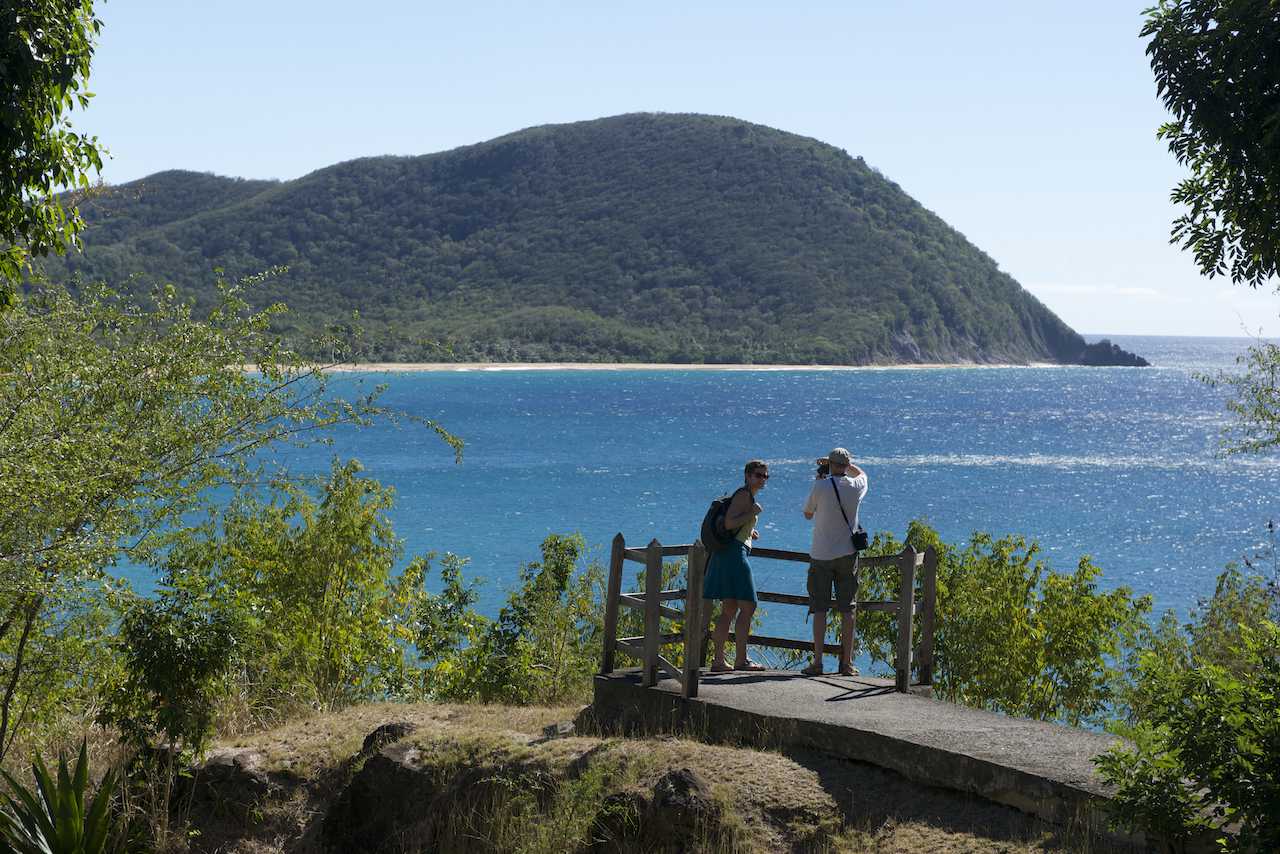
Looking out from the bay at Deshaies, Basse Terre (c) Judith Baker
The islands of Guadeloupe offer a glimpse into old world Caribbean and yet distinct from each other. Desiderade is wild and undeveloped and the pancake-shaped Marie Galante is rural and unspoiled, filled with sugar cane.
Les Saintes, a series of eight tropical islands located around 10 km (6 mi) south of Guadeloupe, can be reached from Basse Terre by ferry.
Only two are populated and one of those is Terre de Haute, the largest of the eight islands. It is rich in tropical and marine beauty but it was not considered suitable for sugar production because of its hilly terrain. Consequently it had no slaves and locals are descended from Norman and Breton colonists and many have blond or red hair.
Food
Guadeloupe serves up some great dishes, and you can taste influences from Europe, Africa, India and America in the local cuisine.

Restaurant L’Amer in Deshais (c) Judith Baker
In Deshaies, you’ll find an incongruous mix of French patisseries and West Indian diners. There’s no missing L’Amer, painted bright orange. This busy restaurant on the main street overlooks the sea and serves Guadeloupe specialities such as fresh lobster and the aperitif Ti’punch (lemon, rum and sugar).
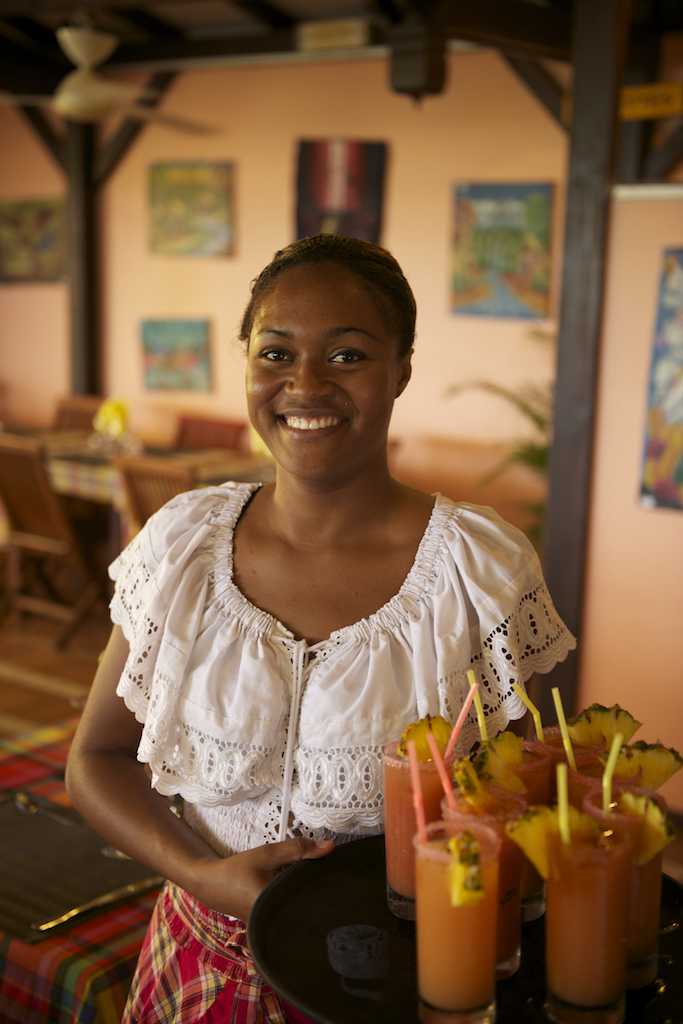
Ti’punch (c) Judith Baker
Beaches
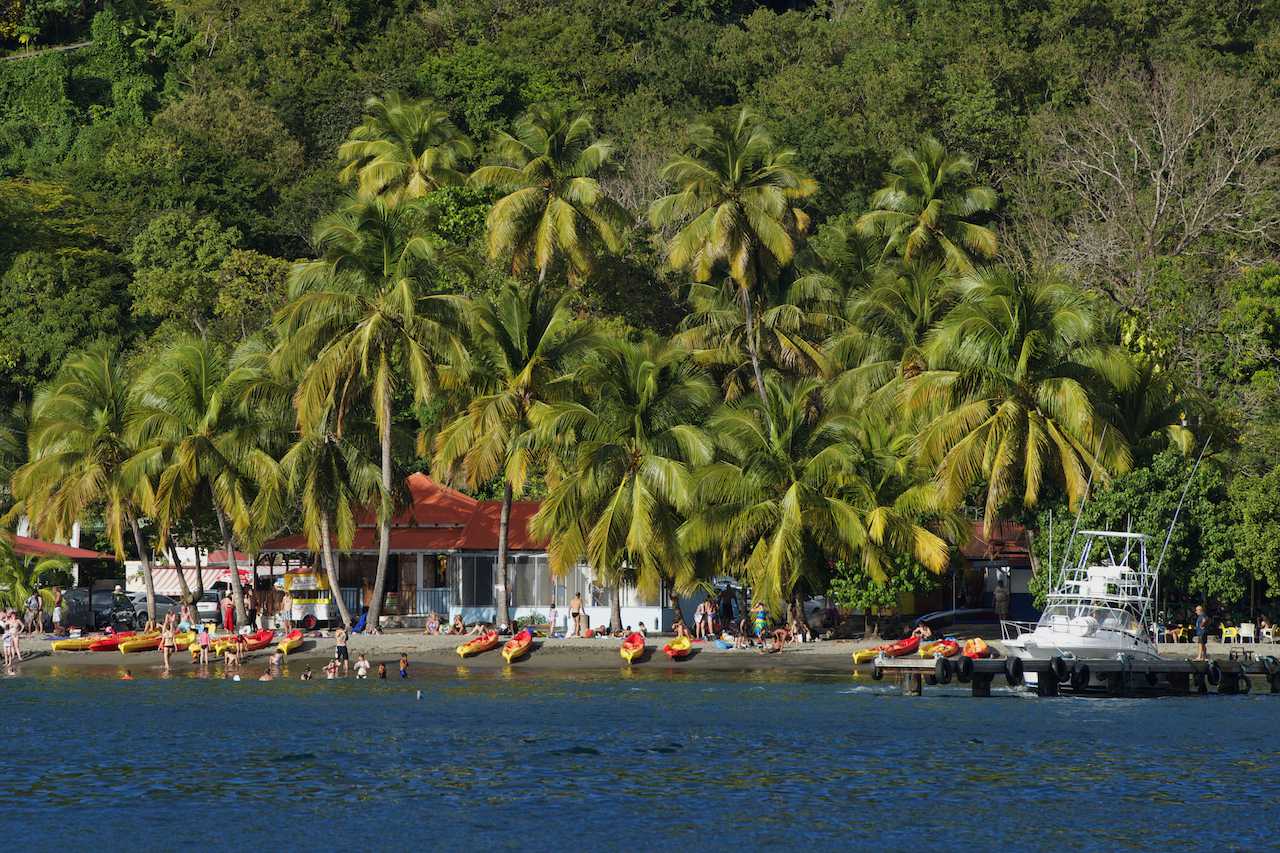
Malendure beach in Bouillante (c) Judith Baker
In Basse Terre the beach of Grand Anse is simply stunning. The sand looks like a ribbon of yellow trimming in front of an emerald jungle. Imagine how beautiful the sunsets are in this scenery.
Guadeloupe’s main island has about 50 beaches with many more on the smaller islands and generally the best beaches can be found on the south west of Grand Terre and the west of Basse Terre. Les Saintes has one of the prettiest beaches in the archipelago.
Nature
The huge lagoon Cul de Sac is enclosed by a 29 kilometre coral reef, a nature reserve that contains a rich ecosystem, mangrove and swamp forest which can be explored by kayak or boat.
In the centre of Basse Terre the national parc, full of hiking trails and here you will find the magical Cascade aux Ecrevisses, a jungle waterfall. The island is home to 270 different ferns and 100 species of orchids.
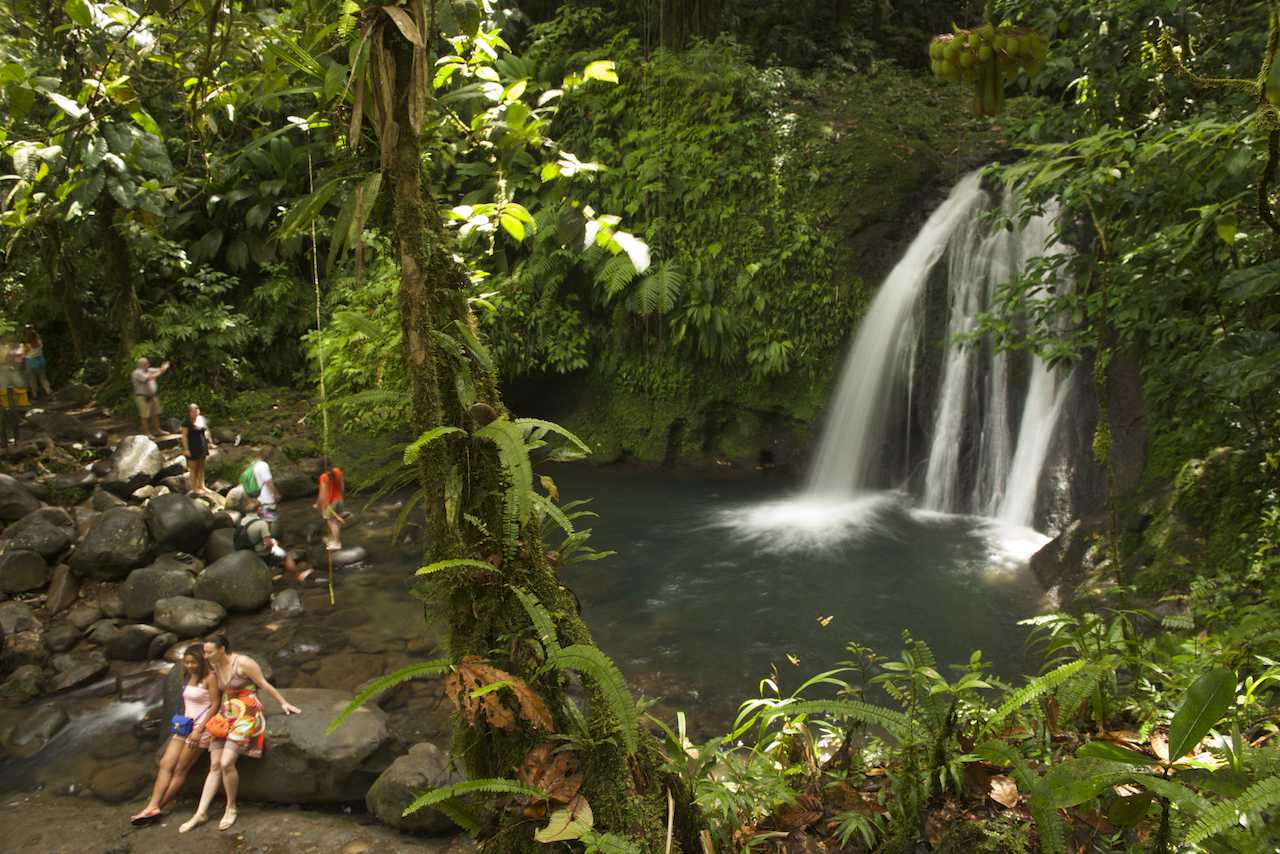
Cascade aux Ecrevisses (c) Judith Baker
The Reserve Cousteau in Basse-Terre is named after Jacques Cousteau, the French father of scuba who thought this had the world’s finest marine life. There is an underwater statue of him, which divers touch for luck.
History
In the Gran River valley the Griviliere is an old coffee farm which extends over one of the islands most beautiful natural sites. You can go on a journey from the master’s house to the former slaves’ box which tells the story of coffee, cocoa and the plantation system.
Francois Hollande, the French President, opened the first memorial to slavery in the Caribbean on Guadeloupe on May 10th 2015. Hollande paid homage to slaves and their sacrifices at the memorial – a momentous occasion. Memorial ACTe is “a Caribbean centre on the expression and memory of slavery and the slave trade” and is housed in a former sugar factory in the Guadeloupian city of Pointe-à-Pitre.
How to get there: Air France flies to Guadeloupe via Paris.
Where to stay:
Booking.com
